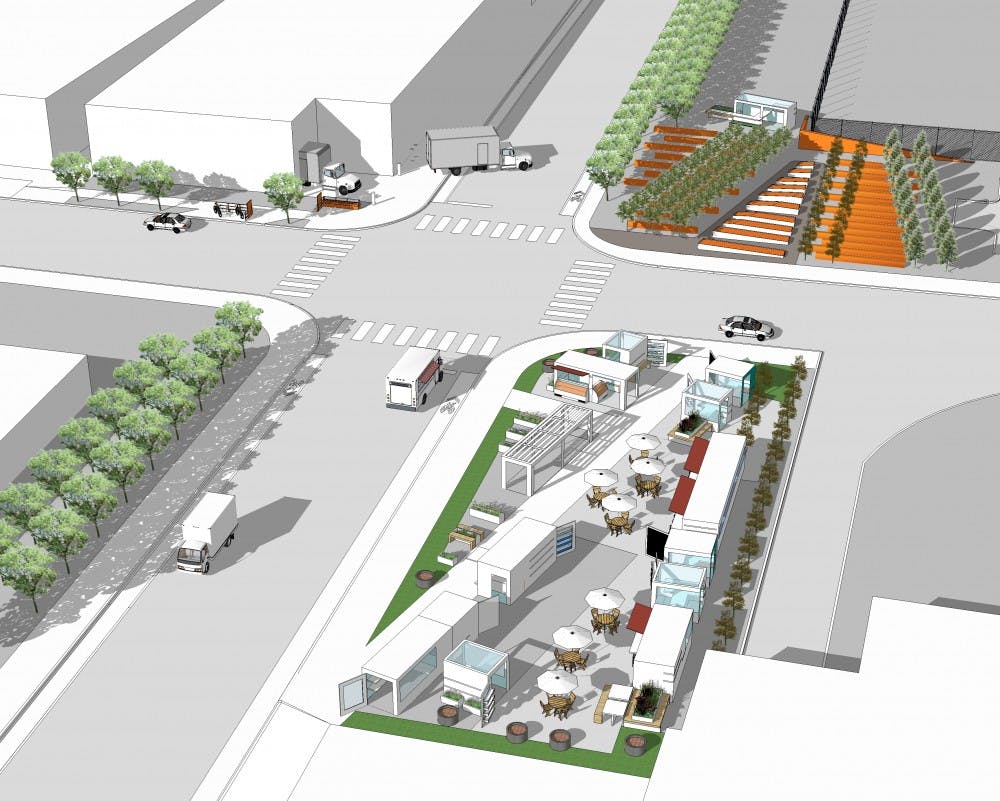The Union Stockyards of Chicago, founded in 1865, may bear witness to a new story and Ball State may play a part in doing so.
The students of the College of Architecture and Planning (CAP) are working on reinventing a new identity for the historic stockyards that hold a significant place in the history of Chicago.
During its prime in the early 20th century, the stockyards served as the center of the world’s meatpacking industry.
“The stockyards were a sort of wonder of the world that fascinated tourists and was a major economic driver in Chicago for several decades,” said David Ferguson, the interim dean of CAP. “Chicago is there to the extent it is probably because of the stockyards.”
As the industry modernized and spread out across the country, the place once aptly titled “The Hog Butcher of the World” in a poem by Carl Sandburg, lost its prevalence.
In order to bring the stockyards back to their former glory, CAP students have teamed up with the international, award-winning architectural, engineering and planning firm, Smith Group.
Michael Johnson, the co-director of urban design practice at the firm and a Ball State alumnus said the stockyards deserve to become economically stable again.
“Think about what Chicago would have been without the stockyards,” Johnson said. “It now deserves an equally progressive and forward thinking idea.”
The partnership came after the firm was awarded the Emens Distinguished Professorship, something previously given to a single person through the university’s colleges on a yearly basis.
The company, which now serves as a firm-in-residence, has three roles: take part in the college’s lecture series and offer expertise, undertake joint research assignments with students and work on a studio project that involves professors and students across all of the college’s disciplines.
“Studios are the heartbeat of what happens at this college,” Ferguson said. “Why not start a project that we both want to do across all of our disciplines and work together?”
In February, a team of graduate students from CAP’s Indianapolis branch spent four days surveying the area in Chicago, meeting with the local stakeholders and beginning preliminary design research.
While the meatpacking industry no longer exists to the extent that it did, the area still houses some innovative food-based companies. Two notable companies are Testa Produce, a food and beverage distribution company that is the first LEED Platinum certified refrigerated food distribution facility in the United States, and Plant Chicago, a sustainable food production facility that minimizes food waste by reusing it for other food production purposes all within the facility itself.
“Students are really interested in emulating the processes of these companies on a larger scale to help rejuvenate the entire district,” Ferguson said.
While CAP’s partnership with Smith Group is pro-bono, their involvement in the project has drawn new attention to the area.
“When we mention that Ball State University is working on the project, the interest goes way up,” Ferguson said. “We want to shine a spotlight and generate a renewed interest in the holistic development of this part of Chicago that is highly underutilized.”
Ferguson said the students are taking into account the history of the site as well as the opportunities presented by the existing greenways, waterways and railway lines.
“We don’t want to jump to conclusions about what the final project will look like,” Ferguson said. “By the end of the semester, we’ll have a clearer idea of what direction makes the best sense.”
Justin Ferguson, the assistant dean for CAP: Indy Programs said this is a hands-on, real world project that the students can be part of, and not just something confined to the classroom.
“You can’t just design it on a piece of paper and not take into account the neighborhood, the people who live there and the different sociocultural and political contexts,” Justin Ferguson said.
Johnson said he hopes the students gain an appreciation for the complex challenges that come with real-world projects in the urban environments of post-industrial cities.
“The education I received at Ball State is near and dear to my heart, and I wouldn’t be anywhere close to where I am now without the kind of formative thinking that I received while I was at the university,” he said. “Merging the lines between academia and professional work is paramount to my goals and I look forward to sharing my experience with the students.”
Contact Rohith Rao with comments at rprao@bsu.edu or on Twitter @RaoReports.





